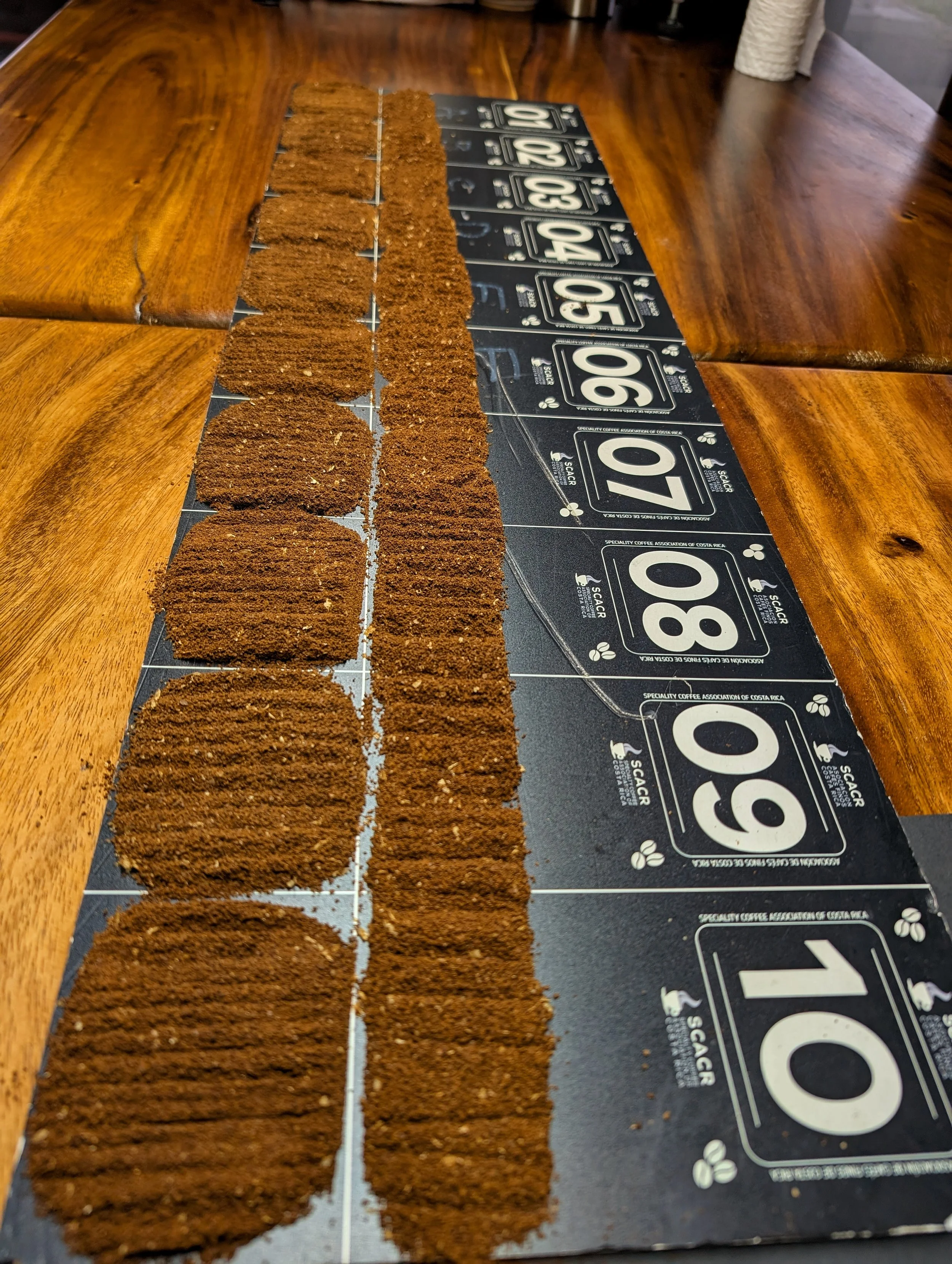COSTA RICA, CUP OF EXCELLENCE 2025
Pura Vida Coffee – Costa Rica Cup of Excellence 2025
By Peter Jones.
—
At the end of May I had the honor to be an international judge for the 2025 Costa Rica Cup of Excellence competition. Although Costa Rica is well known for its outstanding coffees and complex cup profiles, it is better known for its beaches, diverse wildlife, cloud forests, and welcoming Ticas and Ticos (the colloquial terms Costa Ricans use to refer to themselves). After an intense week of long days tasting hundreds of cups of coffee, I never did get to experience the Costa Rica most tourists see. Instead, I had a deep dive into the country’s coffees, the nuances between the different growing regions, how the international market is impacting coffee producers, and what new varietals and processes coffee producers are experimenting with.
As I flew into San Jose from Colorado, I went over my journal notes from the last time I had been to Costa Rica, which was in 2023, also as an international judge for the Cup of Excellence competition. 2023 was my first time judging Costa Rica, so my eyes were wide open, and I was excited to learn more about the country’s coffees and cup profiles. This time I wanted to reaffirm what I had learned in 2023, as well as open some connections for an Idle Hands direct relationship with a producer.
This year the competition was held outside of the small town of San Ramon, in the Valle Central Occidental, one of Costa Rica’s most complex coffee regions due to the myriad micro-climates found in the area. The competition was broken down into three categories based on processing: washed, honey and naturals, and experimental. Costa Rica is famous for honey processed coffees, with some in the coffee world attributing the creation of that processing method to Costa Rican producers. The washed process is well known, while the experimental category is new, having only been introduced into the competition in 2024 – it encompasses both wet and dry/natural processing methods that include extra steps such as anaerobic fermentation or carbonic maceration.
After a day of calibrating with the other international jurors, we dove right into the competition coffees, cupping 40 coffees (160 cups) per juror per day. The amount of work that goes into putting on such a competition is staggering – for Costa Rica there were 22 international jurors, which means over 3,520 individual cups of coffee were ground, dosed, and cupped each day! Let’s just say the Costa Rican crew involved in putting the event on are rock stars!
Like other origin countries, producers in Costa Rica have slowly been replacing their traditional varietals with more exotic ones. As such, Geisha coffees dominated the competition, but Costa Rican producers are still growing and producing exceptional traditional coffees using Catuai (first introduced to Costa Rica from Brazil in 1985), Villa Sarchi (discovered in Costa Rica in the 1950s or 60s), and San Roque (a natural mutation of SL28 that occurred in Costa Rica in the 1960s).
Another trend that the competition revealed is how much Costa Rican producers have embraced complex processing techniques. To some extent, this should come as no surprise, since Costa Rican producers developed the honey process, which is notoriously difficult to do well. Other coffees in the competition boasted multi-stage wet and dry processing, complex tiered drying and shading processes, and various temperature-controlled fermentation techniques. All and all, the coffees were high impact, fruit forward, and super clean.
Besides cupping hundreds of fabulous coffees, we also visited a female owned and operated farm. Along with a national effort to promote diversity and preserve the environment, coffee producers are also working hard to make sure their farms contribute – instead of extract – to the local environmental stewardship standards. The farm we visited had an impressive 30% of its land permanently dedicated to forest and wildlife habitat. We also visited a trapiche, the traditional Costa Rican sugar mill where the same family of five brothers make sugar from sugarcane. Finally, we visited the Café de Altura de San Ramon coffee mill, which mills almost all of the coffee grown around San Ramon and in the Valle Central Occidental. Well known for it’s start-of-the-art processing and milling equipment, Café de Altura is owned by 570 small-scale producers who came together when the private mill in San Ramon closed.
The 2025 Costa Rica Cup of Excellence competition delivered on so many levels. Not only did I learn more about the varietals, processes, and producers that are making some of the best coffee in Costa Rica, but I re-connected with in-country friends and partners, solidifying relationships for Idle Hands. Likewise, the competition delivered for the producers, awarding 4 Presidential Awards (coffees scoring 90 points and above), and delivering back directly to the producers over $700,000 dollars, a new record.
The full competition results are here, along with the auction results and prices paid to producers. Idle Hands is proud to have won some of Roger Ureña Hidalgo’s amazing washed geisha from the Dota region. Keep an eye out for this stellar washed geisha, as it is sure to sell out fast based on the limited quantity we were able to win. Pura Vida!
















